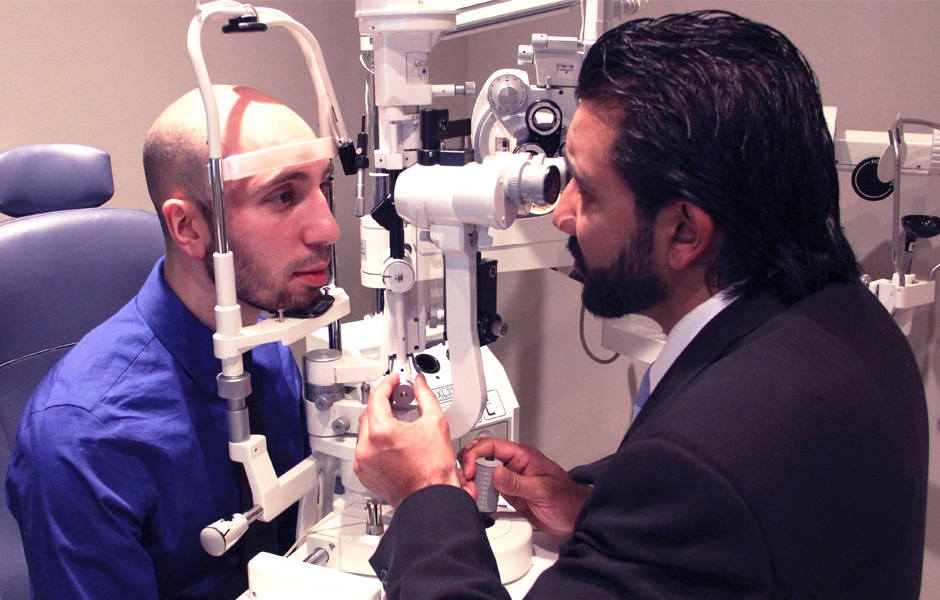Exploring the Spectrum of Eye Issues Treated for Improved Vision Health And Wellness
In the world of vision health and wellness, a diverse array of eye problems exists, varying from typical refractive errors to a lot more intricate chronic conditions. These problems commonly posture obstacles to individuals looking for ideal visual acuity and convenience. By exploring the range of eye disorders that can affect one's vision, a much deeper understanding of the ins and outs involved in maintaining eye wellness emerges. The interaction of different variables, from age-related adjustments to architectural irregularities within the eye, emphasizes the value of detailed care customized per particular problem. As we navigate through the landscape of treatments and treatments targeted at enhancing vision wellness, a closer consider the nuanced strategies used in attending to these problems clarifies the improvements in the field of ophthalmology and the appealing prospects they hold for those aiming for enhanced aesthetic health.
Common Refractive Mistakes
Refractive mistakes, such as hyperopia, astigmatism, and myopia, are usual vision problems that influence the quality of vision. Nearsightedness, additionally referred to as nearsightedness, causes distant challenge appear blurry, while hyperopia, or farsightedness, makes close-up things challenging to see clearly. Astigmatism leads to fuzzy or altered vision whatsoever distances due to an irregularly designed cornea.
These refractive mistakes occur when the form of the eye protects against light from concentrating directly on the retina, causing obscured vision. Nearsightedness is typically brought on by the eyeball being also long, hyperopia by the eyeball being also brief, and astigmatism by an uneven curvature of the cornea or lens.
Fortunately, these usual refractive errors can be remedied via different techniques such as prescription glasses, get in touch with lenses, or refractive surgical procedure like LASIK. By attending to these visual problems, people can experience improved quality and intensity of vision, inevitably boosting their total lifestyle. Regular eye examinations are essential for spotting and taking care of these conditions to keep optimum eye health and wellness.
Age-Related Eye Conditions
As people age, they may come to be a lot more prone to numerous eye problems that can impact their vision health. One of the most common age-related eye conditions is presbyopia, a natural component of aging where the lens of the eye loses its flexibility, resulting in difficulty focusing on close items. Routine eye assessments, early discovery, and prompt treatment are critical in managing age-related eye problems and preserving optimal vision health as people expand older.
Persistent Eye Diseases
With a change from age-related eye conditions to chronic eye illness, the emphasis now turns to lasting problems that require recurring monitoring to maintain vision health and wellness. Eye Center Andalusia. Persistent eye illness include a variety of conditions that influence the eyes over an extended duration, often causing modern vision loss if left neglected. Diseases like glaucoma, diabetic person retinopathy, age-related macular deterioration, and chronic completely dry eye disorder loss under this category
Glaucoma, identified by damages to the optic nerve, can result in irreversible loss of sight if not managed effectively. Diabetic retinopathy, a difficulty of diabetic issues, causes damages to blood vessels in the retina and is a leading reason for loss of sight in grownups. Age-related macular degeneration affects the main component of the retina, influencing sharp, central vision. Persistent dry eye syndrome, on the other hand, can create discomfort and possible damage to the cornea if not appropriately dealt with.
Early detection, routine monitoring, and adherence to treatment plans are vital in taking care of chronic eye conditions to avoid vision wear and tear and maintain optimum eye health and wellness. Routine eye examinations and examinations with eye treatment professionals play an essential role in the continuous monitoring of these problems.
Corneal Disorders
Frequently affecting the outermost layer of the eye, corneal problems include a range of problems that can influence vision and general eye health. The cornea, a transparent dome-shaped surface covering the front component of the eye, plays a critical duty in concentrating light and protecting the eye from debris and infection. When the cornea is impacted by conditions such as keratoconus, corneal abscess, or dystrophies like Fuchs' endothelial dystrophy, he has a good point it can cause signs and symptoms like fuzzy vision, pain, sensitivity to light, and in serious situations, vision loss.
Keratoconus is a dynamic thinning of the cornea that results in a cone-like bulge, distorting vision. Corneal ulcers, commonly triggered by injuries or infections, can bring about redness, discharge, and severe discomfort. Fuchs' endothelial dystrophy influences the back layer of the cornea, bring about liquid build-up and over cast vision.
Treatment for corneal disorders differs depending on the particular problem however may include medications, corneal cross-linking, or in serious instances, corneal transplant surgical procedure to bring back vision and ease signs and symptoms. Normal eye exams are important for early discovery and management of corneal problems to maintain vision health and wellness.
Retinal Conditions

Age-related macular degeneration is a leading cause of vision loss in individuals over 50, influencing the macula in the center of the retina. Retinitis pigmentosa is a hereditary problem that triggers a steady loss of vision due to deterioration of the retina's light-sensitive cells.
Early detection and prompt intervention are crucial in handling retinal problems to maintain vision and stop irreversible damage. Neurologist Andalusia. Regular eye examinations and punctual therapy are important in maintaining retinal wellness and preserving visual function

Conclusion
To conclude, exploring the spectrum of eye conditions dealt with for boosted vision health exposes the substantial selection of concerns that can impact the eyes. From usual refractive mistakes to persistent eye conditions, recognizing these conditions is essential for preserving optimal vision health and wellness. By attending to and dealing with these numerous eye problems, people can protect their vision and overall high quality of life. It is necessary to seek routine eye tests and consult with medical care specialists for correct medical diagnosis and therapy.
Regular eye examinations, very early discovery, and prompt intervention are essential in managing age-related eye problems and protecting optimal vision health as people grow older.
With a shift from age-related eye problems to persistent eye diseases, the emphasis now transforms to long-lasting conditions that need continuous management to maintain vision health and wellness. Persistent click here for info eye diseases incorporate a variety of conditions that impact the eyes over an extended period, usually leading to modern vision loss if left neglected.Commonly see this affecting the outermost layer of the eye, corneal conditions encompass a range of problems that can influence vision and general eye wellness.In conclusion, discovering the spectrum of eye problems treated for enhanced vision wellness reveals the vast selection of issues that can impact the eyes.